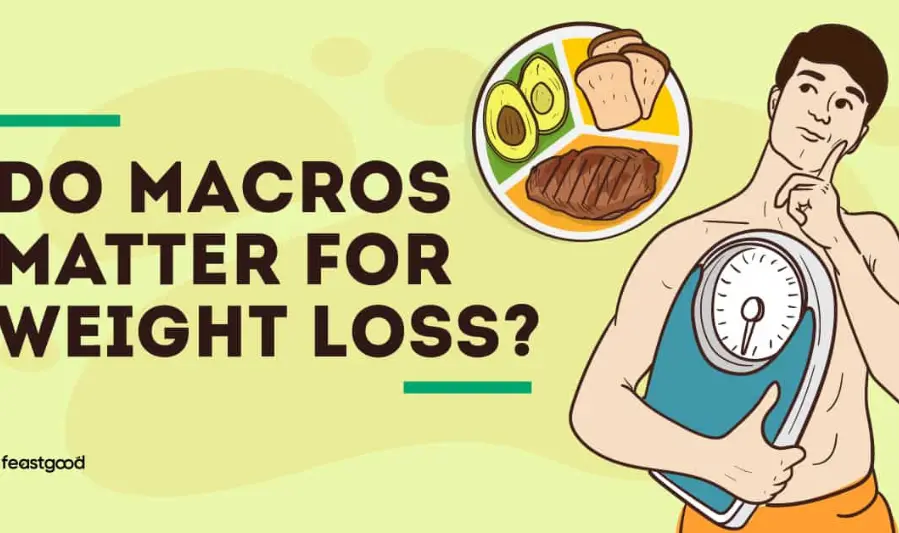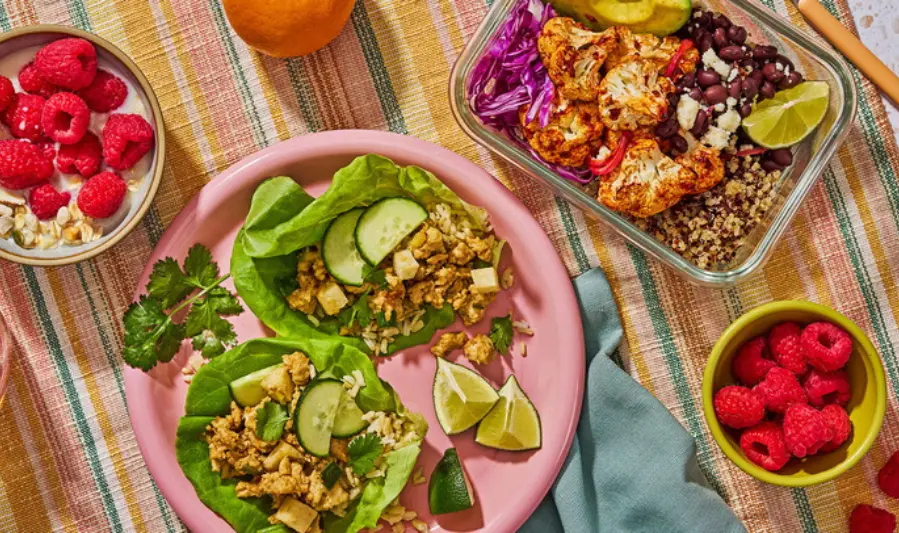Introduction
Brief Explanation of Weight Loss Through Nutrition
Weight loss becomes easier and more sustainable when you focus on balanced nutrition instead of extreme dieting. Eating whole foods, controlling portions, and making mindful choices help your body burn calories efficiently and maintain energy levels.
Why Simple Habits Work Better Than Strict Diets
Strict diets are difficult to maintain and often lead to quick weight regain. Simple daily habits, on the other hand, are realistic, flexible, and fit naturally into your lifestyle. These habits help you stay consistent, which is the key to long-term weight loss.
What Readers Will Learn in This Guide
In this guide, you will learn practical and easy-to-follow nutrition tips, portion control strategies, healthier food choices, hydration habits, and ways to stay motivated without feeling restricted or overwhelmed.
Why Nutrition Matters for Weight Loss

Role of Calories and Nutrients
Weight loss is influenced by the balance between calories consumed and calories burned. Your body needs the right mix of nutrients—proteins, healthy fats, fiber, vitamins, and minerals—to function well while creating a healthy calorie deficit.
How Calories Affect Weight Loss
When you consume fewer calories than your body uses, it begins to burn stored fat for energy. But the quality of those calories also determines how full, energetic, and healthy you feel.
How Food Choices Impact Metabolism
The foods you eat directly influence how fast or slow your metabolism works. Protein-rich foods increase calorie burn, fiber slows digestion to keep you full longer, and whole foods support stable blood sugar levels that prevent overeating.
Metabolism-Boosting Eating Habits
Choosing nutrient-dense foods, eating regularly, and avoiding excess sugar can help your metabolism work effectively throughout the day.
Importance of Balanced Eating
Balanced eating ensures your body gets everything it needs to lose weight without feeling deprived. A combination of lean proteins, whole grains, fruits, vegetables, and healthy fats keeps hunger under control and supports steady energy.
Why Balance Prevents Cravings
When your meals include all essential nutrients, your body stays satisfied, reducing cravings and emotional eating.
Simple Nutrition Tips for Weight Loss

3.1 Focus on Whole Foods
Whole foods provide essential nutrients that support weight loss and overall health.
Fruits, Vegetables, Whole Grains, Lean Proteins
These foods are naturally rich in vitamins, minerals, fiber, and antioxidants. They keep you full longer and support better digestion.
Benefits of Natural, Unprocessed Foods
Unprocessed foods reduce excess calories, added sugars, and unhealthy fats, helping your body burn fat more efficiently.
3.2 Control Portion Sizes
Managing how much you eat is just as important as what you eat.
Balanced Plate Method
Fill half your plate with vegetables, one-quarter with lean protein, and one-quarter with whole grains.
Using Smaller Plates and Mindful Serving
Smaller plates help naturally reduce portions, while mindful serving prevents overeating.
3.3 Stay Hydrated
Water plays a major role in supporting your metabolism and controlling appetite.
How Water Helps With Weight Loss
Drinking water boosts metabolism, reduces cravings, and helps the body flush out toxins.
Daily Water Goals
Aim for 6–8 glasses per day, adjusting based on activity level and climate.
3.4 Add More Protein
Protein keeps you full, builds muscle, and supports fat burning.
Keeps You Full Longer
High-protein foods slow digestion, stabilizing blood sugar levels and preventing overeating.
Best Protein Sources
Lean meats, eggs, fish, Greek yogurt, lentils, chickpeas, beans, tofu, and nuts.
3.5 Reduce Sugar and Processed Foods
Limiting sugar is one of the fastest ways to improve weight and energy levels.
Effects of Sugar on Weight
Excess sugar leads to fat storage, hunger spikes, and energy crashes.
Healthier Alternatives
Choose fruits, natural sweeteners like honey (in moderation), whole-grain snacks, and fresh foods.
3.6 Increase Fiber Intake
Fiber is essential for digestion, fullness, and stable energy.
Fiber for Digestion and Fullness
It slows digestion, reduces hunger, and supports gut health.
High-Fiber Food Examples
Oats, chia seeds, beans, lentils, apples, berries, and whole grains.
3.7 Don’t Skip Meals
Skipping meals can disrupt metabolism and trigger overeating later.
How Skipping Meals Slows Metabolism
Your body shifts into “energy-saving mode,” burning fewer calories.
Benefits of Regular Eating
Regular meals maintain steady energy, control hunger, and improve food choices.
3.8 Plan and Prep Your Meals
Meal prep helps you stay consistent and avoid unhealthy choices.
Benefits of Meal Planning
Reduces stress, saves time, and prevents last-minute unhealthy eating.
Simple Meal Prep Ideas
Cut vegetables in advance, cook proteins in batches, prepare overnight oats, and portion snacks.
3.9 Practice Mindful Eating
Being present while eating supports better portion control.
Eating Slowly
Chewing more and eating slowly improve digestion and prevent overeating.
Listening to Hunger Cues
Eat when hungry, stop when full, and avoid emotional snacking.
3.10 Stay Consistent
Consistency is the foundation of long-term success.
Long-Term Habits vs. Quick Fixes
Fad diets give temporary results, but daily habits create permanent changes.
Small Steps That Add Up
Tiny improvements—like drinking more water or adding vegetables—lead to big results over time.
Beginner-Friendly Meal Ideas
Breakfast Options
Start your day with meals that are filling, nutritious, and easy to prepare.
Simple Healthy Breakfast Ideas
- Oatmeal topped with fruits and chia seeds
- Greek yogurt bowl with honey and nuts
- Whole-grain toast with eggs
- Smoothie made with banana, spinach, and protein
- Vegetable omelette with whole-wheat bread
Lunch Ideas
Choose meals that balance protein, fiber, and healthy carbs to keep you energized.
Easy Lunch Options
- Grilled chicken salad with mixed vegetables
- Brown rice with lentils and sautéed veggies
- Tuna or chickpea salad wraps
- Whole-grain pasta with vegetables and light seasoning
- Baked sweet potato with cottage cheese
Dinner Choices
Keep dinner light, balanced, and easy to digest.
Healthy Dinner Suggestions
- Grilled fish or chicken with steamed vegetables
- Stir-fried veggies with tofu or paneer
- Quinoa with mixed vegetables
- Homemade vegetable soup with whole-grain bread
- Baked chicken with roasted sweet potatoes
Healthy Snacks
Choose snacks that help control hunger without adding excess calories.
Snack Ideas for Weight Loss
- Fresh fruits like apples, berries, or oranges
- Nuts and seeds (small portion)
- Hummus with cucumber or carrot sticks
- Air-popped popcorn
- Yogurt with a sprinkle of oats
you may also like to read these posts:
Discover the Beauty of Indonesian Traditional Fashion Styles
Learn Java Easily Online with Simple Coding Examples
Easy Core Java Tutorials for Beginners to Start Coding
Beginner-Friendly Home Workouts: Simple Routines to Get Started
Grocery Shopping Guide
Essential Pantry Staples
Keeping the right pantry items on hand makes healthy eating easier and faster.
Must-Have Pantry Items
- Whole grains (oats, brown rice, quinoa)
- Beans and lentils
- Olive oil or avocado oil
- Whole-wheat pasta
- Nuts and seeds
- Canned tuna or chickpeas
- Herbs and spices for flavor
These staples support quick, balanced meals without relying on processed foods.
Fresh Produce
Fresh fruits and vegetables add essential nutrients, fiber, and natural flavors to your diet.
Recommended Fresh Foods
- Leafy greens: spinach, lettuce, kale
- Colorful vegetables: carrots, bell peppers, cucumbers
- Fruits: apples, bananas, oranges, berries
- Healthy carb sources: sweet potatoes, tomatoes, zucchini
Buying a variety of colors helps ensure you get a wide range of vitamins.
Budget-Friendly Healthy Foods
Eating healthy doesn’t have to be expensive. Smart shopping can help you stay on budget.
Affordable Nutritious Choices
- Seasonal fruits and vegetables
- Frozen fruits and veggies (same nutrition, lower cost)
- Eggs
- Whole grains like oats or brown rice
- Lentils and beans (very budget-friendly)
- Canned tomatoes and corn
- Peanut butter (in moderation)
These foods give you high nutrition value without increasing grocery costs.
Common Mistakes to Avoid
Eating Too Few Calories
Many beginners think eating very little will speed up weight loss, but it often does the opposite.
Why This Is a Problem
When you eat too few calories, your metabolism slows down, energy drops, and cravings increase. This can lead to overeating later and difficulty maintaining progress.
Cutting Out Entire Food Groups
Eliminating carbs, fats, or other important groups can create imbalance in your diet.
Why Balanced Eating Works Better
Your body needs all nutrients—carbs for energy, protein for muscle, and healthy fats for hormone balance. Removing entire groups can lead to deficiencies and long-term health issues.
Drinking Sugary Drinks
Sugary beverages add calories without making you feel full.
Hidden Calories You Should Watch
Soft drinks, packaged juices, sweetened teas, and energy drinks cause blood sugar spikes, increased cravings, and fat storage.
Expecting Fast Results
Quick results may seem motivating but they rarely last.
Why Slow and Steady Wins
Sustainable weight loss takes time. Building healthy habits leads to long-term results, better energy, and improved overall well-being.
Faqs:
What is the simplest way to start losing weight through nutrition?
Begin by eating more whole foods, drinking enough water, and reducing sugar. Small, consistent changes are more effective than strict diets.
Do I need to cut out carbs completely to lose weight?
No. Healthy carbs like oats, brown rice, fruits, and vegetables provide energy and fiber. The key is choosing the right carbs—not eliminating them.
How many meals should I eat per day?
Most people do well with 3 balanced meals and 1–2 healthy snacks. The goal is to avoid long gaps that cause overeating later.
Are snacks allowed during weight loss?
Yes! Healthy snacks like fruits, nuts, yogurt, and hummus help control hunger and prevent binge eating.
How fast can I lose weight safely?
A safe and healthy weight loss rate is about 0.5 to 1 kg per week. Slow, steady progress is more sustainable than quick, extreme changes.
Conclusion
Weight loss becomes much easier when you focus on simple, sustainable nutrition habits rather than strict diets. By choosing whole foods, drinking enough water, controlling portions, and reducing sugar, you can build a healthy lifestyle that supports long-term weight management. Remember, small changes done consistently lead to big results. Stay patient, stay committed, and trust the process—your healthier journey begins with one simple step at a time.




